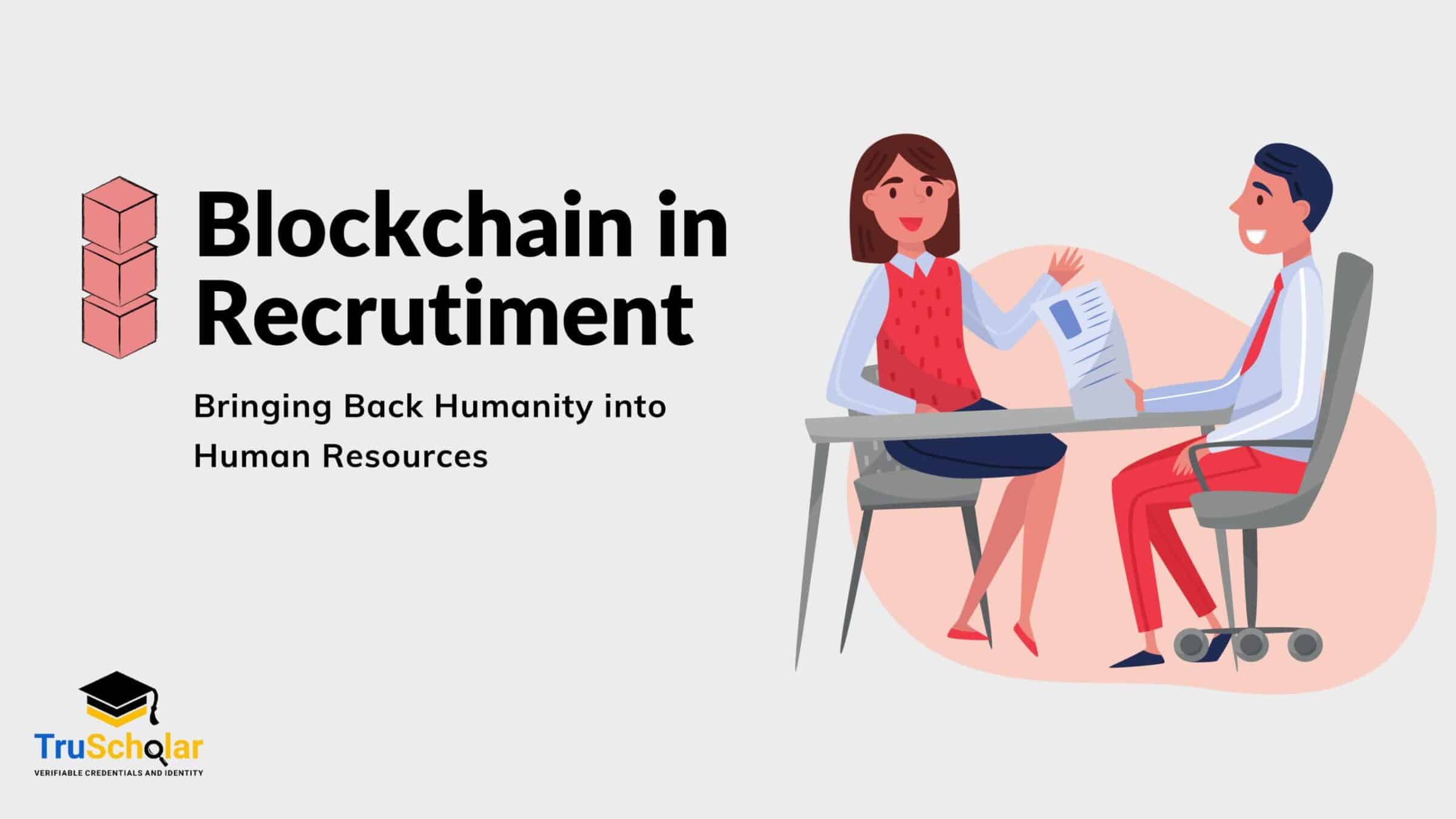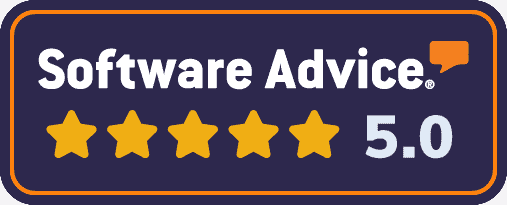Blockchain in Recruitment
“Hiring the right people takes time, the right questions, and a healthy dose of curiosity.”
– Richard Branson
For a business to rise in the success or continue in success, it requires the right amount of talent. The right people in the right positions. Without them, the business will eventually run into losses and shutdown. Or even worse, the wrong people may end up bringing a notorious and bad reputation to the organization.
So, hiring the right people is crucial. The team that makes this happen is the recruitment or talent acquisition team; that we already know. However, is the job easy? Absolutely not. And, do they always get the right talent? Definitely not.
But, without a shred of doubt, recruitment teams go through a lot of pain to get the right candidates and fill vacant positions. They create multiple streams and strategies to acquire the talent. From working with third party agencies to using hiring platforms such as LinkedIn, recruitment teams are always engaged to find the right fit.
Can they be blamed?
To fill a single vacant position, they’re obligated to go through hundreds and thousands of resumes. Be it a high-profile C-level executive or an entry-level fresher or any position in between, they all require careful consideration.
The truth, however, is that it is humanly impossible to go through all those applications and find the right fit. Sometimes, it gets so exhausting that recruiters wish their lives were easier. Due to the overwhelming pressure, exhaustion, and various other reasons, they are sometimes forced to compromise on standards and quality, favouring the demand.
Though you can’t blame them for doing that, it still does not justify the wrong talent brought into the system. The wrong talent is the bane of an organization. So, what’s the solution?
Blockchain: The Game Changer
Over the years, many HR tech companies have popped up with new solutions. Some use artificial intelligence, some use machine learning, some use traditional JavaScript-based development models, and the number goes on.
Though these solutions do provide & promise the speed and assistance required to fasten the recruitment processes; most of these companies lack answers to one key question. How accurate is the information shared by the candidates?
Obviously, the next question that follows, is how soon can you confirm the accuracy? – These two questions are critical to the entire hiring process.
Knowing the accuracy of the candidate’s credentials (pillar) leads to deciding the right fit for the position and organization. If a recruiter or the recruitment team can confirm the accuracy faster, they can complete the formalities easily.
Of course, there are many HR tech companies offering end-to-end solutions around this; but the key differentiator is blockchain technology. Because the most important aspects of blockchain technology are security, accuracy, speed, and decentralization.
With these characteristics, blockchain has brought a change in the world and across multiple industries. At the same time, it’s making the lives of many HR professionals easier. This leaves recruiters with enough time to have meaningful conversations, understand the prospect in-depth, and create effective relationships with the prospects; bringing back the human aspect.
Let’s look at how and where blockchain is making a difference.
Background Checks with Digital Credentials
As mentioned earlier, the most important ability of a blockchain is to store information securely and cryptically. So, once an information is stored on a blockchain, it becomes very difficult to delete it and nobody can tamper with it. So, it remains safe and secure. The information is also decentralized, which means it is not stored on one computer or server. A blockchain is stored in multiple nodes across the globe resulting in the continuous existence of verified information.
How is this possible?
To understand the in-depth technicalities of how blockchain works, you can go through our guide to blockchain-based credential verification. Nevertheless, let us give you a quick demonstration of how it works.
Blockchain is a decentralized and distributed ledger.
A ledger is a list of timestamped transactions. It tells you when a transaction is made and who are the parties involved. Blockchain uses asymmetric cryptographic encryption to store this information; which means the contents of a transaction are protected using a public key and private key method.
Those with the public key of the transaction can confirm the provenance of a transaction, such as when it occurred and who made the transaction. To access the contents of a transaction, one should have the private key. Unless you have either of these keys, it cannot be proved that a transaction exists. As this ledger is decentralized and distributed to multiple locations, it becomes impossible to tamper with the records, thereby resulting in immutable records.
You may have noticed that we used the word transactions a few times above. We use it because originally blockchain was created to address finances and economics (Remember Bitcoin and Ethereum?). However, the technology is now used in various industries.
So, how can this help the recruitment team?
In the last few years, many blockchain companies – including TruScholar, have created the ability to store verified credentials of an individual digitally on the blockchain. Essentially, what we do is help universities, institutions and students digitize their certificates.
Unlike manual certificates which require another round of manual verification, blockchain-based digital credentials are cryptographically verified and time-stamped to prove the existence of the certificates.
What problem is it solving?
In India, on average, it takes 15 – 20 days to complete background verification. Now that’s a lot of time. Imagine you hire a person for a job. He’s successfully onboarded after completing a long process of interviewing.
This employee has become part of the culture, part of the team, and much more. However, after a while, the background verification team gives a red flag. It could be a fake credential. It could be a credential from a fake university. Or it could just be a blatant lie the candidate mentioned on his resume (we will uncover this in the next section).
Regardless of the reason, you should now let go of the employee. And the position is vacant again. All the excruciating hours that you spent in filling this position have now gone in vain. If you are a recruiter then you know this occurrence is not uncommon in workplaces.
It results in unnecessary pressure on production and operations teams as well as a bad reputation for the recruitment team. Overall, it will affect the growth of the organization.
However, if the same credential verification happens digitally, it will take just a few minutes. You can validate all the details on the go and you would not need a huge team for background checks and verification.
Verified Records & Digital CVs
Did you know that almost 85% of the people lie in their CVs, resumes and interviews? This is a huge problem. And, the bigger the position, the bigger the risk.
How big of a problem is it?
Let’s say you are hiring for a senior manager position. The candidate will be responsible for delivering substantial results. It is imperative that he has the relevant experience required to deliver those results. However, most managerial candidates subtly argue their way into the position rather than proving their relevant experience.
Many use their expertise in the industry to prove their worth but may not have the actual subject matter expertise for the position. Also, it’s difficult to do referral checks. Most of the time, the ex-employer references don’t really add value as they probably could be their friends.
So, once again, due to the constant demand to fill positions, the recruitment team and hiring managers have to go by face value rather than real facts. They hire the manager and the manager has entered the system. Now starts the real problem.
The junior manager and junior staff who actually know the subject cannot challenge the senior manager. Instead of leading, he’s depending on his team to prove his worth. If a project fails, then no problem. Let’s blame the team. And one thing most senior managers possess is the ability to talk down or cover up an issue. Thanks to their exposure!
Overall, it’s a monumental disaster. As most of these activities are very subtle in nature, it takes a long time to unearth the truth. By the time a company figures out the problem, he or she has spent a good time in the system. Gained experience based on others and now they probably continue the cycle in the next company. It not only affects the organization but genuine hardworking employees. And that’s how most incompetent employees play a clever game with employers. This is just one scenario. It happens across multiple levels.
How can Blockchain fix this?
It’s very simple. Timestamp each accomplishment with valid information related to the project. Timestamp the involvement of the candidate in each project during their tenure in an organization. Obviously, this has to be done by the previous and existing employers. TruScholar makes it happen. We work with recruitment teams across multiple companies to digitize the accomplishments of employees.
Some of you may say, doesn’t that make a lie more robust if they have insider friends? Great question. The beauty of blockchain is that it’s a trustless network. It means that a transaction is verified and added to the chain by nodes who do not trust each other but only check the validity of a transaction.
Be it permissioned (private) or permission-less (public) blockchains, when you enter information into the blockchain, each node confirms the validity of the information based on the contents and not the identity. This way, incorrect information is not agreed upon by all nodes and therefore cannot become part of the blockchain.
This way, an existing employer or future employer can circumvent all the lies and grade the employee or candidate appropriately. In turn, it creates a verified proof of digital records and accomplishments that cannot be tampered with; thereby securing the genuine employees.
With these verified records and accomplishments, recruiters and prospective employees can have productive conversations. And that’s how Blockchain enables a smooth process of recruitment based on real value rather than face value.
Power to the Prospect
Another value-add of this technology is that employees or prospective candidates will be able to share their CVs only to the deserving parties. They can update their CVs on a timely basis and share it only when required.
With the help of encrypted and block-chain based CVs, the prospects would know who is viewing their profiles and who’s not. They can also determine who should and who should not have access to their profiles. We believe that this will bring a balance of power between both parties.
Digital Onboarding – Build Productive Relationships
Onboarding generally takes an entire day. Almost half of the day goes into formalities rather than building productive relationships with future employees. With the help of blockchain technology, recruiters can now plan fun and brand building activities, instead of formalities.
First impressions are the best impressions
The first day in a new company is an exciting experience for any individual. Of course, many companies create onboarding activities that add value to the new employees. However, they’re bound by critical onboarding activities.
However, with verified identities & credentials encrypted and stored on the blockchain, recruiters can complete background verification, create identities, and open bank accounts within minutes.
This leaves enough room to spend time with new employees. Understanding employee expectations, setting the right expectations, introducing them to the culture of the company, and portraying the many opportunities for growth becomes a priority. This way you will set the best first impression.
Wow, isn’t blockchain wonderful?
Digital Badges – Continued Learning
Learning never stops. Every day there is a new technology or product being invented. Every day corporate teams need their members to improve their skills to stay in the competition. This leads to desperation and oftentimes employees forget to fortify their resumes with newly earned badges.
Blockchain technology can make a difference. It can help in creating digital badges whenever an employee completes a new course. This will automatically become part of their digital CVs.
For example, we at TruScholar work with multiple institutions in digitizing their issuing credentials and providing digital badges. We also create special badges for extraordinary accomplishments. Now, the learners can add these to their CVs and forget about providing unlimited paperwork or losing paperwork.
Even if they get displaced from a country or meet with a tragedy in their lives, they can be rest assured about their lifelong achievements; as they are stored in encrypted, distributed, and tamper-proof blockchains.
Peer-to-Peer Recruitment
This is a futuristic possibility that Blockchain can turn into reality. The concept of peer-to-peer recruitment is removing all middle parties. Those who need to fill a position will directly get in touch with potential candidates. It means there will be no need for job boards, no need for recruitment agencies, or may be no more need for recruitment teams.
As we all know, Gig culture is increasing by the day. Most companies want to work with freelancers or contractors, get their jobs done and move on to the next project. Companies need speed, to stay relevant and outsmart the competition. Finding employees and filling positions is actually a long, time consuming, and expensive process, often with unexpected results.
By introducing peer-to-peer recruitment, powered by Digital Identities, CVs and Badges, decision-makers can directly approach the potential individual and offer them work. This will truly be a miracle that most companies and individuals are looking forward to.
But this does not actually mean that recruiters will be out of employment. Instead, they will only get better at their jobs. As a wise man once said, “Technology can take instructions but cannot think like a human”
Conclusion: Blockchain will bring humanity back into human resources
With fake credentials taken care of, fake experiences dealt with, and fake identities moved to trash; recruiters can forget monotonous, unrealistic, and hypocritical interviews. They can instead have long productive conversations with each verified individual and understand how they can add value to their company’s vision, mission, objectives and overall efforts.
Now there is only one question left for recruiters to answer: will recruiters make a difference with this newfound time?
Only time will tell. But, TruScholar can help in creating that much-needed leverage that recruiters are in desperate need of. As a leading credential verification solution, we can set up the entire process of blockchain-based verification.
We work with students, employees, training institutions and universities in creating verified and encrypted digital credentials and identities. We also work with recruitment teams to understand their needs and set up necessary processes that help improve the speed of their recruitment.
Reach out to us to know more information. And do subscribe to our newsletter to get weekly insights on trending blockchain news. Till we meet in the next article, have a nice day






